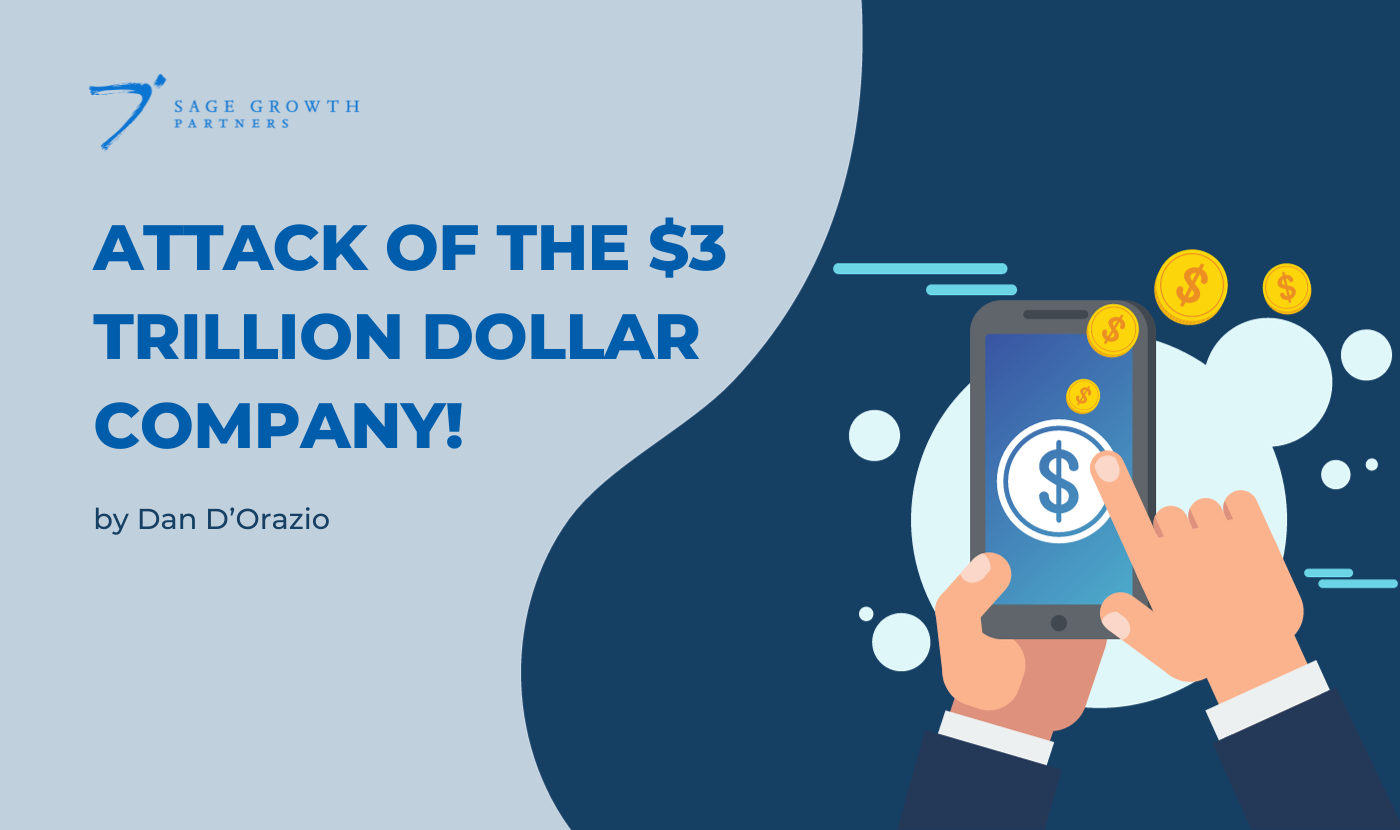
Attack of the $3 Trillion Dollar Company!
“You know what our problem is? We both have the same disease: money, and happy ways of spending it.” — Attack of the 50-Foot Woman
In Attack of the 50-Foot Woman, the 1958 B-movie classic, the stature of wealthy protagonist Nancy Archer grows even larger — a literal 50 feet! — after an encounter with out-of-this-world technology.
Wait . . . are we talking about a movie or Apple, Inc.? This summer, the tech giant became the first company to reach a $3 trillion valuation (Reuters). Should we celebrate or run for our lives? And could there be a downstream impact on healthcare? Apple and the trillionaires that trail it have already invested in healthcare, a reality that could reinforce the industry’s bad habits around innovation and investing.
The Golden Apple
When Apple crossed the $3T Rubicon, two things happened quickly. Its market cap dropped $130 billion by the next month and a long-standing question resurfaced: Is Apple really worth $3 trillion. Should we have believed it was worth $2 trillion? After all, when Nancy Archer in Attack of the 50 Foot Woman tried to convince people that a massive, unstoppable entity had invaded, the town wasn’t convinced.
So, what got Apple to $3T, why do some analysts doubt the valuation, and — for we investor-minded healthcare nerds — will one of our own ever reach the Mac milestone?
Still-bullish analysts cite market expansion, continued iPhone revenue growth in China and India, the company’s high-margin service revenues and cost controls, and the Fed rate-hike slowdown as reasons to believe that an already-big Apple will get bigger (Reuters).
Others alert to the sluggish sales at Apple’s domestic core (iPhone sales, followed in hardware by Mac and iPad) and a “difficult macroeconomic environment” (Fortune).
Who’s Next?
While analysts debate whether Apple has a worm, other tech behemoths are among those closest to the $3T club (Reuters). And like Apple, they all have a growing healthcare footprint:
- $2Ts – Microsoft has made more cloud/AI investments, many that intersection with Epic (Becker’s);
- $1Ts – Amazon acquired primary care company One Medical and has expanded its mail-order pharmacy while Alphabet’s $1B health tech raise has raised eyebrows (Becker’s; TechCrunch); and
- $700B – Meta’s has made smaller moves, but don’t count out Zuck, the metaverse and the implications for healthcare just yet (MedTechPulse).
To this group, the closest healthcare company is UnitedHealth Group. UHG is sandwiched between two oil companies, ahead of Wal-Mart, and with a $480B market cap as of Q3 2023 (Reuters). While $3T is questionable, The Motley Fool predicts UHG be worth $1T by 2030.
How?
While UHG won’t become a trillion-dollar company the same way Apple did, it stopped being just one kind of company a long time ago. Calling United “a juggernaut in a massive industry,” The Motley Fool writes:
“The company serves 150 million-plus people each year via its UnitedHealthcare health insurance plans and Optum data and technology businesses. That’s a massive underlying customer base … Organic growth through higher medical membership and price hikes on its health insurance plans/services is just one lever the company could use to boost revenue and profits. The other is bolt-on acquisitions, which could help to further expand its already leading market share by the time the global health insurance market can reach nearly $3 trillion in 2030.”
You read that right. The same year the entire global health insurance market reaches $3T, United could represent a third of that.
United, It Stands
In Attack, Nancy’s philandering husband Harry and his mistress Honey plot to take her money, only to find she’s Too Big to Fail — at least for a while.
We’ve been here before. Tech busted at the millennium, the entire economy in 2008, and healthcare very nearly during COVID. And while hospital margins are tight, labor costs are astronomical, and digital health investment is down, the industry has fared better than most.
Today tech and healthcare have gravitated even closer. That’s all fine and good but for their uneasy relationship. Big Tech and Big Finance believed they could decode Big Healthcare (Haven anyone?), which in turn leans on both to solve its legacy problems. AI, augmented reality, blockchain, 3D printers, and nanotechnology may improve the delivery system, but healthcare’s problems are as much about people, process, and policy gaps as they are platforms and point solutions.
These are just a few of healthcare’s bad tech habits. And what about its investments? Just like Apple, questionable valuation is another (Athena Health anyone?). As we noted in a prior blog, discipline will be easier with less easy money, higher interest rates, and fewer really good companies to invest in.
Expect United to find them. Just this year, the health Goliath defeated the DOJ to complete its $7.8B acquisition of tech Goliath Change Healthcare. In 2019, United bought DaVita Medical Group — a leading provider rolled inside a leading dialysis company — for $4.3B. It tried to buy Signify Health (as did Amazon) but was outbid by CVS Health and its mere $85B market cap.
Attack of the Voice of Reason?
When Nancy has her alien encounter, no one believes her. She’s often intoxicated and sees things that aren’t there. As Attack of the 50-Foot Woman ends, a super-sized Nancy kills Honey, then Harry, before an angry public kills her.
The healthcare market has seen its share of pink elephants disguised as unicorns. For the better, it keeps people healthy, manages disease, and saves lives. For the worse, it is a profit-driven industry that also bankrupts people, including the insured.
So should we stop the Attack of the Trillion-Dollar Healthcare Company? Could we if we tried?